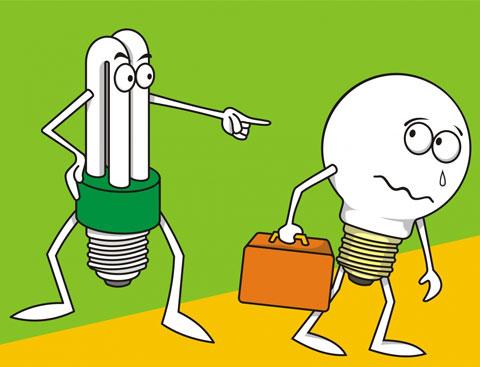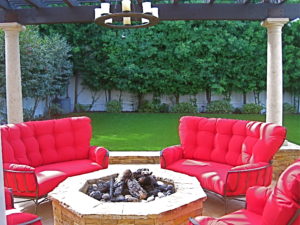Climate change comes to everybody’s mind as we watch wildfires raging out of control, as we deal with rising flood waters and as we are exposed to powerful hurricanes and tornadoes. Somehow we know that things are not like they used to be, but climate change crept up slowly at first; a record heatwave here, and a large cold spell there, massive flooding that seemed far away, and wandering polar bears looking for icebergs that seem even further from anybodies front door. But, as I am sitting on my patio bathed in apocalyptic orange light with ashes raining in my coffee, I can’t help but wonder on how did we get here and most importantly, what can we do to get back on a better track.
The subject of climate change is complex, confusing and it seems we are somehow doomed already, and any change that one person will do can’t possibly make a difference. However, that is not so! Your energy consumption stands in direct correlation to the increase of greenhouse gas emissions and therefore it contributes to the global warming trend. You can reduce your carbon foot print by making small changes within your life. Today, we will focus on your home environment and how every step towards cleaner, more environmentally friendlier living counts.
Start your journey to reduce your carbon footprint today and share your progress to inspire others to do the same. As a collective whole, we can bring on the change that we need to see.
Here are some simple steps you can implement today and a few suggestions on how you can improve your energy output in the future.
MIND YOUR ELECTRICAL OUTPUT

- Replace ALL you light bulbs with LED bulbs.
How can this help? LED lights use 50% less energy than their incandescent counterparts. An incandescent light only converts 10% of the energy used into light, the rest is emitted as heat.
2. Reduce the use of light fixtures in general.
-be mindful and turn off the lights when you leave the room
-install more natural daylight features, as in new windows, transoms or clearstory windows.
-install skylights or solar tubes, especially in bathrooms without windows
-install vacancy sensors that will turn the light off automatically when you leave the room
-install night lights that help you get around at night without the need to turn on the light
-remove or open up heavy curtains or shutters to allow more light in
-explore solar light options. You can get great solar flood lights on a motion sensor. For your patio, buy some solar string lights to cheer the space without using up your electricity.
How can this help? Any extra day light in your space will reduce the need to turn on a light and it will result in energy savings over time.
3. Look for vampire loads in the house
-that is any appliance that uses passive electricity, i.e. a toaster with a digital clock. However the main items are stereos, DVRs, plasma TVs, game consoles and chargers.
! unplug all these items when they are not in use !
– on that note, do not leave your chargers plugged in and do not charge phones overnight. Once your device is fully charged, usually within 3 hours, unplug the charger from the outlet.
How can this help? I love this expression. Vampire loads are any extra electrical sucking devices that you are not aware of. They sneak into your house as a glorious gadget, but they quietly sip on your electrical bill.
4. Turn off your desktop computer, or at the least, shut off the monitor
How can this help? Regular desk top computers account for approximately 3% of all energy consumption in the US. That is not a small amount for one electronic item. If you can, switch to a laptop, as they use considerably less energy than the main computers.
5. Keep your refrigerator at the recommended temperature setting and locate it away from warm appliances.
How can this help? Your refrigerator is one of the appliances that consumes the most energy. If you still running your old clunker, be sure that you keep it at the recommended temperature to avoid that it has to work too hard to keep things cool. Also, for future design, do not place the refrigerator next to the stove or oven, a heat vent or expose it to direct sunlight. Exposure to warm temperatures will force the fridge to work harder. If you are purchasing a new one, look for the Energy Star label for further energy savings.
6. Be sure that you only purchase Energy Star rated appliances.
That includes TVs, stereos, speakers and all entertainment systems, along with your main appliances like stoves, ovens, microwaves, coffee machines etc.
How can this help? This step can help a lot in reducing your electrical consumption. According to the EPA, if just 10% of homes would use energy Star rated appliances, it would reduce carbon emissions at the same rate as 1.7 million acres of trees.
KEEPING YOUR HOUSE TEMPERATE

Almost half of our energy consumption is spent heating and cooling the house. By taking steps towards keeping your house at a comfortable temperature, you will make big strides in reducing your energy consumption, and with that, your energy bill.
- Seal your house
How can this help? A tightly sealed home keeps the home environment comfortable and is not immediately subject to exterior temperature changes. Therefore, you do not need to run the AC or the heater as much, or as long and that saves money and energy. Heat rises, so most heat will escape through the attic. However, here are some areas to look for and seal:
-attic
-plug the large holes
-look for leakage where the walls meet the attic floor
-caulk or use expanding foam around vent pipes and electrical wires
-seal around windows
-check if the windows close tightly and also check that no air escapes around window- mounted air conditioners
-install weatherstripping around doors
-seal around switch plates and electrical outlets
-install weatherstripping around attic hatches
-seal gaps around dryer vents and gas pipes
2. Insulate your house
How can this help? Insulation may just be your most effective way to easily improve the heat/cold transfer in your house. Even if you have an old house, you can add insulation in the crawlspace, you can add insulation in the attic, and you can install rigid insulation on the roof. If you are more advantageous, you can add blow in insulation into the walls. Here is a great tutorial on how to use environmentally safe insulation. click here
3. Upgrade your window glazing to double panes, or even double panes with glass between them.
How can this help? Reducing the temperature transfer through the glazing is another vital step in achieving a temperate home environment.
here is a quick tutorial on how to read the window labels. Click here
4. Install solar shades, awnings and drapes on vulnerable windows.
How can this help? Solar shades are a great way to block out heat and UV rays, but yet still allow a view to outside. They are a good alternative to install on south facing windows. Exterior awnings will help shade the windows and block the low lying sun. They are a great alternative for west facing windows. Heavy drapes are a wonderful decorative addition to any north facing windows, as they trap the cold and keep the room cozy longer in the winter. In reverse, any non permanent window covering will let the sun in when needed.
read more about the advantage of solar shades here
5. Get a programmable thermostat
How can this help? These days, you can get a thermostat that can be controlled by your smart phone. This is a great way to control when and how your house can be heated or cooled. If you are not home, set the thermostat on low and heat or cool it to the desired temperature 1 hour before you are scheduled to get home. You can save 2% of the heating bill for each degree that you lower your temperature for the duration of 8 hours. Use secondary heating or cooling elements. For example, install a gas fireplace with a blower to heat the space and use ceiling fans to distribute cool air. And be sure to shut off the vents and close the doors of all the rooms that are not used and do not need to have a comfortable temperature to be in.
BE MINDFUL OF YOUR CARBON FOOT PRINT

- Use a programmable thermostat
- Maintain vents and filters
- Work with shades, awning and drapes
- Cook responsibly
- Turn off your lights
- Reduce vampire loads
- Change the way you do laundry
- Buy only Energy Star rated appliances
Which task will you tackle today? Once you take the first step, you will never look back. Not only will you make your contribution to the health of mother earth, but you are also getting paid to do it. Every small change you implement will result in savings on your energy bill. So start your journey to a cleaner tomorrow today.



